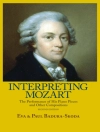This collection offers a new lens through which to examine Spain’s cinema production following the isolation imposed by the Franco regime. The seventeen key films analysed in the volume span a period of 35 years that have been crucial in the development of Spain, Spanish democracy and Spanish cinema. They encompass different genres (horror, thriller, melodrama, social realism, documentary), both popular (Los abrazos rotos/Broken Embraces, Vicky Cristina Barcelona) and more select art house fare (En la ciudad de Sylvia/In the City of Sylvia, El espíritu de la colmena/Spirit of the Beehive) and are made in English (as both first and second language), Basque, Castilian, Catalan and French. Offering an expanded understanding of ‘national’ cinemas, the volume explores key works by Guillermo del Toro and Lucrecia Martel alongside an examination of the ways in which established auteurs (Almodóvar, José Garci, Carlos Saura) and younger generations of filmmakers (Cesc Gay, Amenábar, Bollaín) have harnessed cinematic language towards a commentary on the nation-state. The result is a bold new study of the ways in which film has created new prisms that have determined how Spain is positioned in the global marketplace.
Tabella dei contenuti
List of illustrations
Notes on contributors
Acknowledgements
Introduction – Maria M. Delgado
1. El espíritu de la colmena/ The Spirit of the Beehive (Víctor Erice, 1973): To Kill a Mocking Bird as neglected inter-text – Robin Fiddian
2. Cet obscur objet du désir/That Obscure Object of Desire (Luis Buñuel, 1977): Buñuel’s technique – Mark Millington
3. Ocaña. Retrat intermittent/Ocaña. An Intermittent Portrait (Ventura Pons, 1977): The Mediterranean movida and the passing away of Francoist Barcelona – Alberto Mira
4. El dorado (Carlos Saura, 1987): The keys to El Dorado – Agustín Sánchez Vidal
5. El sol del membrillo/The Quince Tree Sun (Víctor Erice, 1992): Moving pictures — painting, drawing and filmmaking – María José Martínez Jurico and Stephen G.H. Roberts
6. Vacas/Cows (Julio Medem, 1992): From Goya’s dining room via Apocalypse Now – Jo Evans
7. Tesis/Thesis (Alejandro Amenábar, 1996): Delights and follies in filmic discourse – María Donapetry
8. Un instante en la vida ajena/An Instant of Distant Life (José Luis López- Linares, 2003): Domesticating the documentary archive – Kathleen M. Vernon
9. Ninette (José Luis Garci, 2005): Paris revisited – Sue Harris
10. El laberinto del fauno/Pan’s Labyrinth (Guillermo del Toro, 2006): Spanish horror – Paul Julian Smith
11. La noche de los girasoles/The Night of the Sunflowers (Jorge Sánchez-Cabezudo, 2006): Palimpsests of genre, palimpsests of violence – Tom Whittaker
12. En la ciudad de Sylvia/In the City of Sylvia (José Luis Guerín, 2007) and the durée of a derive – Rob Stone
13. Vicky Cristina Barcelona (Woody Allen, 2008): Penélope Cruz and Javier Bardem acting strangely – Chris Perriam
14. La mujer sin cabeza/The Headless Woman (Lucrecia Martel, 2008): Silence, historical memory and metaphor – Maria M. Delgado
15. Los abrazos rotos/ Broken Embraces (Pedro Almodóvar, 2009): Talking cures – Marvin D’Lugo
16. V.O.S. (Cesc Gay, 2009): From Shakespearean comedy to national identity – Celestino Deleyto
17. Y también la lluvia/Even the Rain (Icíar Bollaín, 2010): Social realism, transnationalism and (neo)colonialism – Duncan Wheeler
Index
Circa l’autore
Robin Fiddian is Professor of Spanish, Fellow of Wadham College, University of Oxford












